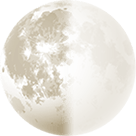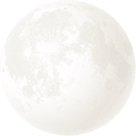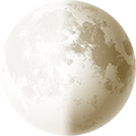What's in the night sky in January (2022)A dark sky meteor shower, Mercury rising, and a full Wolf Moon start off the New Year as well as a number of great deep sky objects worth observing.
January Moon Phases
January's full moon is called the Wolf Moon after the howling of hungry wolves lamenting the scarcity of food in midwinter. Other names for this month's full moon include old moon and ice moon.
Full Moon and New Moon for January 2022

January 2022 Last QuarterThu 1st Jan

January 2022 New MoonMon 3rd Jan

January 2022 First QuarterMon 10th Jan

January 2022 Full MoonTue 18th Jan
January Planets
Venus is always brilliant, shining with a steady, silvery light. Mornings in the eastern sky at dawn from early January through to mid-June.
Mars is visible in the night sky from January to mid-July, then shifts to the morning sky from mid-Oct to the end of December.
Jupiter will be visible in the mornings from January to May, evenings from May to November, and mornings again from mid-December to the end of December.
Saturn is visible in the mornings from late January to early July, and then in the evenings from July to December.
Mercury will be at its "greatest eastern elongation", the highest point above the horizon in the western sky, on the evening of 7th Jan. Mercury will also form a temporary quartet with Jupiter, Saturn, and Venus. Look for them from highest to lowest, east to west, just after sunset.
January Meteor Showers
The Quadrantid Meteor Shower is an above-average shower, with up to 40 meteors per hour at its peak. It is thought to be produced by dust grains left behind by an extinct comet known as 2003 EH1, which was discovered in 2003. Meteors will radiate from the constellation Bootes, but can appear anywhere in the sky.

For 2022 the Quadrantid meteor shower coincides with a new moon, meaning that there will be dark skies and a much better chance of spotting meteors.
January Deep Space Objects
The Orion Nebula (M42) is well placed in the South East along with the Hyades and Pleiades star clusters. See if you can differentiate the colour difference between red/orange Betelgeuse and blue Rigel, Orions' left shoulder and right knee.
A short hop into neighbouring Auriga will bring you to the three exquisite open clusters - M36, M37 and M38 all of which can be spotted with binoculars and lie in the region between Beta Tauri and Delta Aurigae.
With dark skies, you should be able to spot the double cluster Perseus with the naked eye. It's another great target for small telescopes and consists of the clusters NGC 869 and NGC 884.
The Andromeda galaxy is a favourite of mine, directly overhead in December and slowly setting towards the west during January and into February. This large galaxy can be seen as a faint fuzzy blob with the naked eye under dark skies, but it's best to see through binoculars. Through a telescope, the Andromeda Galaxy looks quite diffuse. Use your lowest power; the full extent of the galaxy is huge - five times as large as the full moon. It is the most distant object you can see with your naked eyes being two million light years away.













